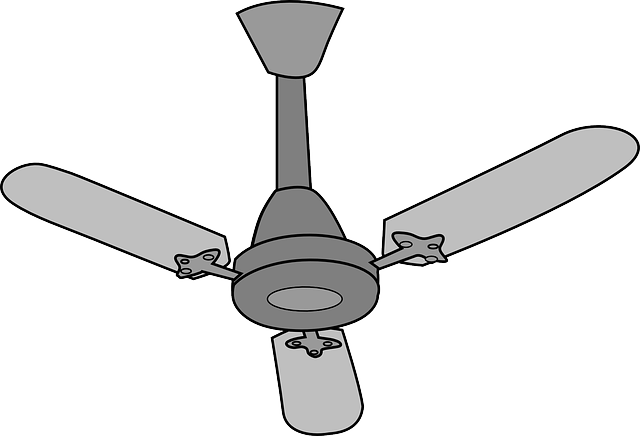Physics can seem like a difficult subject, but actually becomes quite exciting when we break it down and understand the concepts using analogies from everyday life. Simple Harmonic Motion (SHM) and Uniform Circular Motion (UCM) are two key ideas in physics. Once we understand how these two are related, the entire chapter becomes lot simpler to understand.

What is Simple Harmonic Motion (SHM)?
First, let’s talk about SHM. Have we ever witnessed the oscillations of a pendulum? Or a spring that, when stretched and released, moves up and down. These are quintessential SHM examples.

An item moving back and forth around a fixed point, known as the mean position, is said to be in simple harmonic motion. The vital aspect is that the force that brings it back, known as the restoring force, always acts in the opposite direction and is proportionate to the object’s distance from that mean position.
Simple Harmonic Motion and Uniform Circular Motion
Features of SHM:
The motion is periodic — it repeats in equal intervals of time.
There is a restoring force that pulls the object back toward the center.
The acceleration is directly proportional to the displacement from the mean position and opposite in direction.
The equation for SHM is: a = −ω2x
Where:
a is acceleration,
x is displacement,
ω is the angular frequency.
Suppose pulling and releasing a spring. It begins to oscillate. The restoring force works by making it try harder to return the farther you pull it.
What is Uniform Circular Motion (UCM)?
Now let’s talk about Uniform Circular Motion.
Suppose tying a stone to a thread and spinning it at a steady pace in a circle. UCM is being performed on the stone. In this case, the object travels at a steady speed in a circle.
However, the motion’s direction is constantly shifting despite the speed remaining constant. This indicates that there is acceleration (also known as centripetal acceleration) toward the circle’s center since the velocity is changing.
Features of UCM:
The object moves in a circle with constant speed.
The velocity keeps changing direction, so the motion is accelerated.
The centripetal force keeps the object in circular motion.
The acceleration is: a = v2 / r
where:
v is the speed,
r is the radius of the circle.
So, even though it’s called “uniform”, UCM is not uniform in terms of velocity. Only the speed stays the same.
How Are SHM and UCM Related?
SHM and UCM are closely connected.
Consider a point traveling at a constant speed in a circle. If you shine a flashlight on a wall and look at the shadow of that point, the shadow will move in a straight line. SHM is being performed by that shadow.
So, SHM is the projection of UCM on one axis.
Let’s break that down:
In UCM, the object moves in a circle at constant speed.
If we look only at the horizontal (or vertical) movement of that object over time, we see SHM.
That’s why the equations for SHM use sine and cosine the same functions used for circular motion.
For example:
x(t) = A cos(ωt + ϕ)
This is the SHM equation, and it’s derived from circular motion.
Examples in Real Life
Understanding SHM and UCM are these motions appear everywhere in real life:
SHM examples:
Pendulums
Vibrating strings of a guitar
The motion of a spring
Heartbeats (rhythmic motion)
UCM examples:
Satellites orbiting Earth
Blades of a fan
Cars turning in a circular track
The Earth rotating around the Sun

Why This Matters
We can better understand the physical world with these two motion types. SHM aids in the creation of musical instruments, clocks, and even structures that can withstand earthquakes. UCM describes how satellites are launched into orbit and how planets move.
Additionally, many formulas and notions start to make more sense once we realise that SHM is simply UCM viewed from one angle.
Summary
UCM is motion in a circle at a constant speed, whereas SHM is a basic, repeating back-and-forth motion brought on by a restoring force. UCM and SHM have a lovely relationship; SHM is simply UCM’s projection or shadow on a straight line.
In UCM, an object travels in a circular path at a steady speed, but in SHM, an object moves back and forth in a straight line because of a restoring force. But in reality, SHM is the shadow-like projection of UCM on a straight line.
Because the restoring force (or acceleration) is always directed toward and directly proportional to the displacement from the mean position, SHM is unique. This is what makes SHM fluid, recurring, and predictable.
Examples of SHM include:
A swinging pendulum (small angles)
A vibrating guitar string
A mass on a spring
The balance wheel in a mechanical watch
No, the speed in SHM is always fluctuating. The object slows down as it approaches the extreme positions and moves fastest near the mean position. While the direction is always changing in UCM, the speed remains constant.
Projecting an object’s position in UCM onto a straight line give up the SHM equation, x(t) = A cos(ωt + ϕ). This is why both motions share words like angular velocity ω and use circular functions like sine and cosine.
Time Period (T): Time taken for one full oscillation (measured in seconds).
Frequency (f): Number of oscillations per second (measured in Hertz, Hz).
They are related as:
f = 1 / T
Depending on the circumstances, gravity delivers the centripetal force in a satellite circling the earth.
It is produced by the friction between the tires and the road as an automobile turns.
The centripetal force in a string spinning a stone is provided by the tension in the string.